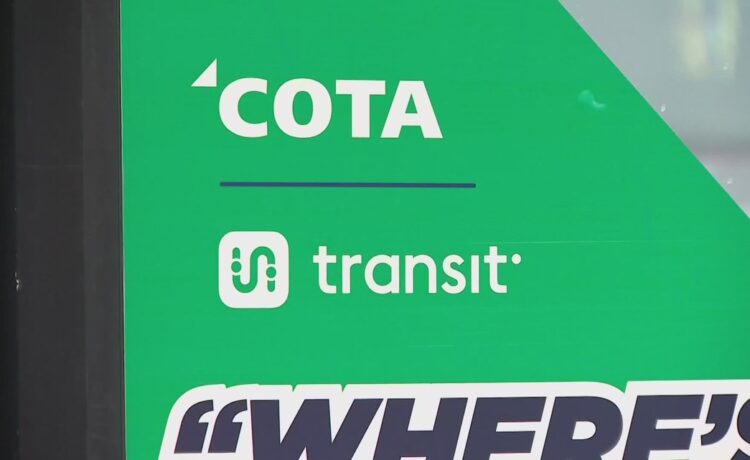The new services include five “bus rapid transit” systems stretching across areas like West Broad Street, East Main Street and the northwest corridor.
COLUMBUS, Ohio — Getting to work on time is something Ryann Steward says can make or break her job.
“I need to be here at least 15 minutes early because, on time is late,” says the account coordinator at Fortuity Call Center in West Columbus. But her commute to work from the Far East Side of Columbus takes 90 minutes each way by bus.
“Having consistent transportation is what keeps me in my livelihood,” says the single parent.
“It keeps the roof over my head, it keeps food on the table. And as we all know, kids are expensive,” Stewart added.
People like Stewart say Issue 47 would help cut down on their commute time if COTA builds the proposed five bus rapid transit lines with the expected $8 billion in new revenue over the next 25 years.


Duane Donaldson, assistant finance professor at Columbus State Community College, says that breaks down to $101.59 per person per year if the population in Greater Columbus grows to the estimated 3.1 million people projected by city leaders.
“To put it in perspective, that would be the equivalent of 1.5 to 2 tanks of gas for a whole year,” Donaldson explains. “That would be on a per person budget. It could mean a 20% of one month’s new car payment or 30% of a used car payment for the whole year.”
The .5% sales tax increase proposal would make it 8% in Franklin County, tying Cuyahoga County for the highest sales tax in the state. Donaldson says this amount is on par with other growing cities that have similar transportation challenges, like Denver, St. Louis, Cleveland, and Cincinnati.
Renderings of COTA’s plan to expand public transit, access to sidewalks and bikeways
“There are a lot of jobs in this town that you cannot get to consistently and reliably on public transportation,” says Fred Brothers, president and CEO of the Fortuity Call Center.
Brothers says he specifically chose West Broad Street as his location because of the accessibility to the potential workforce.
“We jokingly say we’ve spent $12 million on this building because the bus stops up front. But it’s the truth,” Brothers said. “The number one problem in this industry is turnover.”
“What we found is, if you locate the jobs where the folks live, and you make the commute accessible and reasonable, and there are 400,000 people that can get to us on one bus and one bus ride, that’s magic for a commute.”
To read more about LinkUS, click here.
















